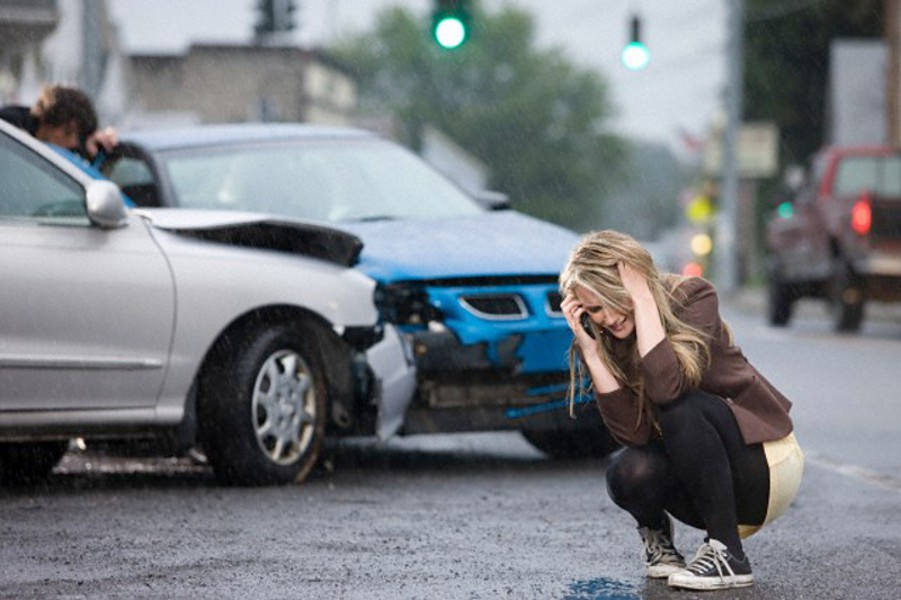
If you’ve been in an auto accident, the first thing you want to do is to make certain that you aren’t injured in any way. Once you’ve done that, you can see to your vehicle. In most car collisions, the drivers aren’t injured at all, but the vehicles have hundreds or, more likely, thousands of dollars of property damage. This damage includes more than just the damage to the vehicle – it includes the damage done to any personal items that were in the vehicle at the time of the accident.
But actually handling a property damage claim can be confusing for people who have never dealt with one before. Here are the basic steps for making and handling a claim. Note that these steps assume that the accident was not your fault.

1. Are you Eligible?
First, confirm that you are eligible to file a property damage claim with you’re auto insurance company. You can do this if you meet one of the following conditions:
- Your vehicle incurred damage of any kind when hit by another.
- You want that damage to be repaired by a professional.
- Your car was damaged badly enough that you will need a temporary replacement while it gets repaired.
- Your personal property was damaged or destroyed and you want to be compensated for its loss.
If even one of these four points applies to you, you can file a property damage claim. If you’re uncertain if you can, you can speak to an auto accident attorney.
2. Have the Right Information
Unfortunately, many people miss their opportunity to get all of the right information because some of the things you may need when making your claim can only come from the scene of the accident. Remembering to gather all this information after being in an accident can be difficult, especially if you’ve been hurt or are badly shaken.
Make sure you know if a ticket was issued to the other driver. If the police who arrive at the scene decide that someone was at fault, they will issue a ticket. This is evidence that the other driver was negligent and will make your claim go through much more quickly and easily.
You also need to collect as much information about the other driver, their insurance company, and the accident itself. Don’t rely on your memory – write everything down, put it in your phone, or even record it in a voicemail if you have to. You want to be sure you have all of the driver’s information – their phone number, address, and driver’s license information. You also need to know what insurance company they use, the company’s contact information, and their policy information. Finally, make sure you take note of any telling statements, especially if the other person admits guilt.
Next, if you have your phone with you, take as many pictures of the accident itself as you can. This includes pictures of the other vehicle, the area, anything broken that has fallen off the cars, and any personal property that was damaged. If you think it might be of use later, photograph it.
3. Make the Claim
If you decide to file a claim, the first thing to do call your insurance company. You are required to file a claim with your own insurance company even if the accident wasn’t your fault. You can file your claim directly with the other person’s insurance company, too, but all insurance companies do require you to file with them as well. In many cases, it’s your insurance company that will get you in a rental car and will pay many of the upfront costs. Once the other insurance company has accepted liability, they will be reimbursed.
Don’t wait for the other person’s insurance to contact you. In some cases, you’ll be waiting forever – the other person may not know that they are required to make a claim, and they may not want to admit that they were at fault. Get the process started as soon as you can. You don’t need an auto-accident attorney to file an insurance claim, but you may need to consult one if there is any resistance to your claim.
4. Call the Other Insurance Company
Next, call the other insurance company and make a claim. You will work with a claims adjuster and will be given a claim number, which you need to make sure you write down. Give them all of the information you gave to your insurance company. You’ll need to provide the claim number to your auto-accident attorney if you end up hiring one.
5. Get the Police Report and Weather Report
Once the official police report is available, be sure to request a copy. You also want to get the weather report for the day of the accident, too. This can help prove your claim if the other person is saying the accident was due to weather conditions. Submit both of these reports to both insurance companies and your attorney.
6. After the Claim
Once the claim has been filed, you’ll work with the claim adjuster to coordinate the repairs to your vehicle. Remember, you can choose any auto repair shop you want, but the insurance may only be willing to pay for a certain amount. You can also ask for a rental car. You have the right to one, especially if your vehicle cannot be driven and will take several days or weeks to be fully repaired.
7. Good Luck on your Claim!
Making an auto accident claim is never fun, especially if the other driver is refusing to acknowledge guilt. Have you had any claim horror stories? Share them with us!
Featured photo credit: Auto accident claim via flickr.com
The post How to Handle your Property Damage Claims after an Auto Accident appeared first on Lifehack.
Source: Lifestyle






